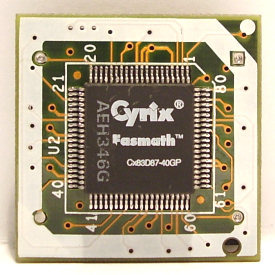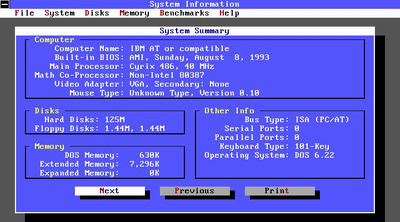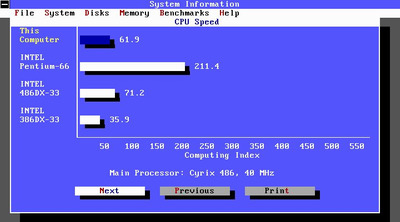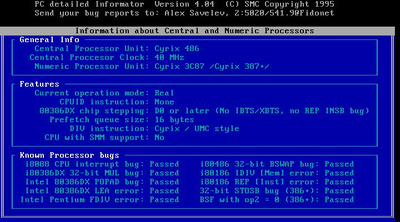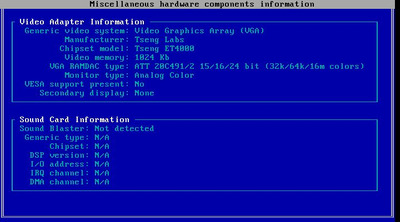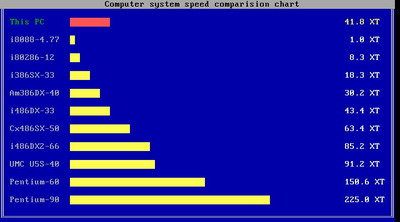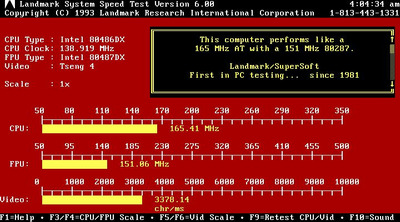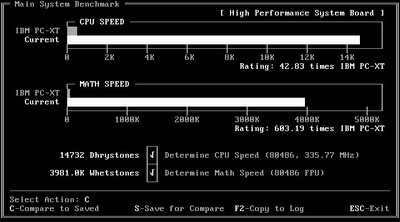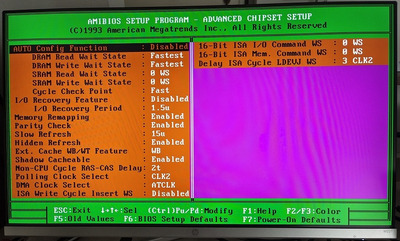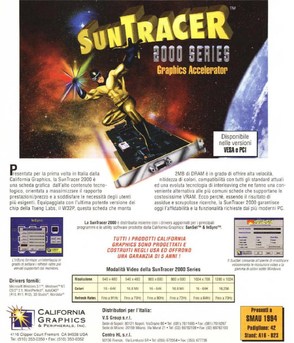First post, by MSxyz
After having played with a 286 for the past month, it was time to move to something more recent
In this case. it's a ECS Panda 386V motherboard ( https://theretroweb.com/motherboards/s/ecs-panda-386v )
The board in my possession is from 1993 and the BIOS is dated February 1994. The chipset is the ALi 14xx, but the chips are marked "Panda". WTF came up with this name? it would be interesting if somebody knows the story behind this name!. To my knowledge, there are no other chipsets, graphic chips or other ASICs labelled with this brand.
The board is equipped with 256KB of 20ns L2 cache and has two sockets for a 386 and an optional FPU. The board came equipped with an Am386DX-40 but I installed a Cyrix 486DLC-40GP. Oddly enough, the FPU socket contained a Cyrix FasMath in a QFP package, soldered on a socket adapter. (see pic) The reason of this contraption is unknown, especially since Cyrix Fasmath FPUs are available also in a standard 68 pin PGA package.
I installed 8 x 1MB 60ns memory modules. The system appears stable, from some preliminary testing, using the fastest settings in the bios. The 486DLC is recognized by the mainboard and there's even a dedicated settings in the bios to enable/disable the tiny 1KB on-chip cache.
At the moment I'm waiting for a new USB to CF adapter (my old one stopped working) so that I can prepare the hard disk and install directly some DOS games and benchmarks. Meanwhile I'm booting DOS from a floppy and that, at least, allows me to run some benchmarks to confirm that everything is working and that the system is stable.
Here's some preliminary performance data:
Norton System Info 8 : 61.9x (not bad, although I've seen some people claiming 63-64x with a similar setup)
Landmark v60 : 165MHz AT 158MHz FPU
Speedsys: RAM speed 65.6 MB/s - Speed Index 9.71
More to come and pictures too...
